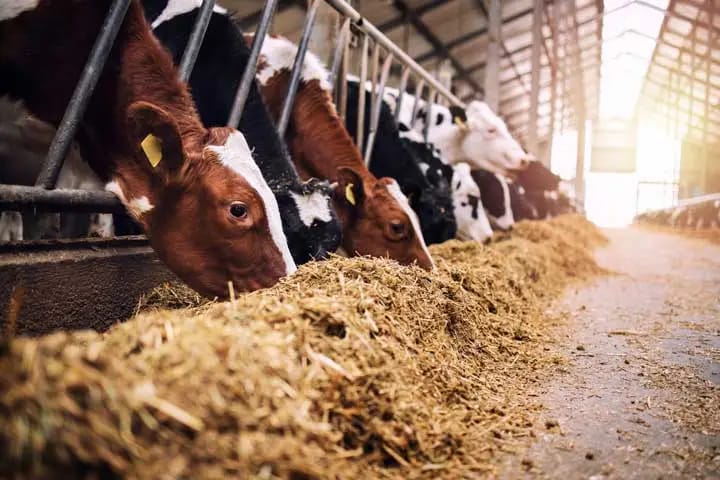
Micronutrients in Animal Health: Vitamins and Minerals Explained
Vitamins and minerals, though needed in small amounts, play critical roles in animal health. These micronutrients support immunity, growth, reproduction, and various physiological functions. This article explores their types, sources, and importance while addressing the effects of deficiencies and excesses. A Q&A section provides additional insights into their role in animal diets.
🐶 Pet Star
12 min read · 28, Jan 2025

Vitamins: The Organic Micronutrients
Vitamins are organic compounds required in minute quantities for various physiological functions. They are divided into two categories: fat-soluble and water-soluble.
1. Fat-Soluble Vitamins
These vitamins are stored in the body’s fat tissues and liver, allowing for long-term reserves.
- Vitamin A
- Functions: Supports vision, reproduction, and immune function.
- Sources: Carrots, leafy greens, fish oils, and fortified feeds.
- Deficiency: Causes night blindness, dry skin, and poor growth.
- Vitamin D
- Functions: Regulates calcium and phosphorus absorption, ensuring healthy bones and teeth.
- Sources: Sunlight, fish, and fortified feeds.
- Deficiency: Leads to rickets in young animals and osteoporosis in adults.
- Vitamin E
- Functions: Acts as an antioxidant, protecting cells from damage and supporting muscle function.
- Sources: Vegetable oils, nuts, seeds, and green forages.
- Deficiency: Results in muscle degeneration and reproductive issues.
- Vitamin K
- Functions: Essential for blood clotting and bone health.
- Sources: Leafy greens, liver, and some fermented feeds.
- Deficiency: Causes prolonged bleeding and weak bones.
2. Water-Soluble Vitamins
Water-soluble vitamins are not stored in the body and must be consumed regularly.
- Vitamin C
- Functions: Supports immune health and acts as an antioxidant.
- Sources: Fresh fruits, vegetables, and certain forages.
- Deficiency: Rare in animals that synthesize their own Vitamin C but can cause scurvy in those that cannot.
- B-Complex Vitamins
- Functions: Include energy metabolism, red blood cell formation, and nervous system support.
- Sources: Whole grains, legumes, yeast, and organ meats.
- Deficiency: Leads to anemia, poor growth, and nervous disorders.
Minerals: The Inorganic Micronutrients
Minerals are inorganic elements that are crucial for structural and metabolic functions. They are classified as macrominerals and trace minerals.
1. Macrominerals
These minerals are required in larger amounts.
- Calcium (Ca)
- Functions: Builds strong bones and teeth, aids muscle function, and supports nerve transmission.
- Sources: Dairy, leafy greens, and fortified feeds.
- Deficiency: Causes weak bones, poor growth, and milk fever in lactating animals.
- Phosphorus (P)
- Functions: Works with calcium to support bones and is involved in energy metabolism.
- Sources: Meat, fish, grains, and legumes.
- Deficiency: Leads to brittle bones and poor reproductive performance.
- Potassium (K)
- Functions: Maintains fluid balance, nerve function, and muscle contractions.
- Sources: Bananas, potatoes, and hay.
- Deficiency: Causes muscle weakness and poor growth.
2. Trace Minerals
These are needed in smaller amounts but are equally vital.
- Iron (Fe)
- Functions: Critical for oxygen transport in the blood.
- Sources: Red meat, legumes, and dark leafy greens.
- Deficiency: Causes anemia, fatigue, and poor growth.
- Zinc (Zn)
- Functions: Supports skin health, immune function, and reproduction.
- Sources: Meat, grains, and seeds.
- Deficiency: Results in skin lesions, poor coat quality, and slow wound healing.
- Selenium (Se)
- Functions: Acts as an antioxidant and supports thyroid function.
- Sources: Nuts, grains, and supplements.
- Deficiency: Causes muscle degeneration and weak immune response.
Balancing Micronutrients in Diets
Balancing vitamins and minerals is crucial for preventing deficiencies and toxicities. Over-supplementation can be as harmful as a lack of these nutrients. Diet formulation should consider the animal’s species, age, activity level, and purpose (e.g., production or companionship).
Strategies for Balancing Micronutrients:
- Provide Diverse Feeds: Use a combination of grains, forages, and supplements.
- Consider Life Stages: Young, pregnant, or lactating animals often need additional vitamins and minerals.
- Avoid Over-Supplementation: Excess minerals like selenium can lead to toxicity.
- Test Feed Quality: Regularly test forage and feed to ensure adequate nutrient levels.
Signs of Micronutrient Imbalance
- Deficiencies:
- Poor growth.
- Weak immune function.
- Reproductive failure.
- Toxicities:
- Organ damage (e.g., liver or kidneys).
- Reduced feed intake.
- Behavioral changes.
Q1: What is the difference between macrominerals and trace minerals?
Ans) Macrominerals are needed in larger amounts (e.g., calcium, phosphorus), while trace minerals are required in smaller quantities (e.g., zinc, selenium).
Q2: Why are fat-soluble vitamins stored in the body?
Ans) Fat-soluble vitamins dissolve in fats and are stored in fat tissues and the liver for future use, unlike water-soluble vitamins.
Q3: Can over-supplementation of vitamins harm animals?
Ans) Yes, excessive amounts of vitamins, especially fat-soluble ones, can lead to toxicity and health issues like liver damage.
Q4: How can I prevent mineral deficiencies in my livestock?
Ans) Provide mineral supplements, use fortified feeds, and ensure the diet includes diverse sources of nutrients.
Q5: Why is selenium important for animals?
Ans) Selenium acts as an antioxidant, supports immune function, and helps regulate the thyroid gland. However, it must be given in controlled amounts.
Similar Articles
Find more relatable content in similar Articles

Virtual Vet Visits: Are Online Consultations Reliable?..
As pet healthcare embraces dig.. Read More

Composting Pet Waste: A Greener Way to Clean Up...
As pet ownership continues to .. Read More

Social Media for Pets: Turning Your Pet into a Digital..
From playful puppies to charis.. Read More

Pets and Mental Health: The Science Behind Emotional H..
Discover the profound impact o.. Read More
Explore Other Categories
© 2024 Copyrights by rPets. All Rights Reserved.